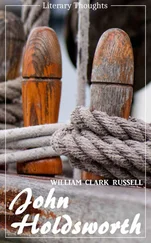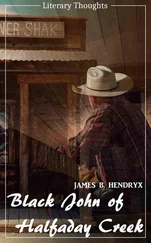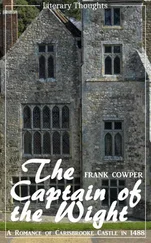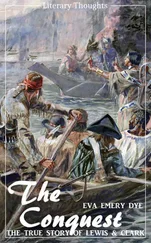In April, 1847, I had the advantage of a personal interview with Sir George Simpson, Governor-in-chief of Rupert's Land, who was then on a visit to England, and of concerting with him the measures necessary for the future progress of the expedition; and I may state here that he entered warmly into the projects for the relief of his old acquaintance Sir John Franklin; and from him I received the kindest personal attention, and that support which his thorough knowledge of the resources of the country and his position as Governor enabled him so effectively to bestow. He informed me that the stock of provisions at the various posts in the Hudson's Bay territories was unusually low, through the failure of the bison hunts on the Saskatchewan, and that it would be necessary to carry out pemican from this country, adequate not only to the ulterior purposes of the voyage in the Arctic Sea, but also to the support of the party during the interior navigation in 1847 and 1848. I, therefore, obtained authority from the Admiralty to manufacture, forthwith, the requisite quantity of that kind of food in Clarence Yard; and as I shall have frequent occasion to allude to it in the subsequent narrative, it may be well to describe in this place the mode of its preparation.
The round or buttock of beef of the best quality, having been cut into thin steaks, from which the fat and membranous parts were pared away, was dried in a malt kiln over an oak fire, until its moisture was entirely dissipated, and the fibre of the meat became friable. It was then ground in a malt mill, when it resembled finely grated meat. Being next mixed with nearly an equal weight of melted beef-suet or lard, the preparation of plain pemican was complete; but to render it more agreeable to the unaccustomed palate, a proportion of the best Zante currents was added to part of it, and part was sweetened with sugar. Both these kinds were much approved of in the sequel by the consumers, but more especially that to which the sugar had been added. After the ingredients were well incorporated by stirring, they were transferred to tin canisters, capable of containing 85 lbs. each; and, having been firmly rammed down and allowed to contract further by cooling, the air was completely expelled and excluded by filling the canister to the brim with melted lard, through a small hole left in the end, which was then covered with a piece of tin, and soldered up. Finally, the canister was painted and lettered according to its contents. The total quantity of pemican thus made was 17,424 lbs., at a cost of 1s. 7¼d. a pound. But the expense was somewhat greater than it would otherwise have been from the inexperience of the labourers, who required to be trained, and from the necessity of buying meat in the London market at a rate above the contract price, occasioned by the bullocks slaughtered by the contractor for the naval force at Portsmouth being inadequate to the supply of the required number of rounds. Various temporary expedients were also resorted to in drying part of the meat, the malt kiln and the whole Clarence Yard establishment being at that time fully occupied night and day in preparing flour and biscuit for the relief of the famishing population of Ireland. By the suggestions of Messrs. Davis and Grant, the intelligent chief officers of the Victualling Yard, and their constant personal superintendence, every difficulty was obviated.
As the meat in drying loses more than three fourths of its original weight, the quantity required was considerable, being 35,651 lbs.; and the sudden abstraction of more than one thousand rounds of beef from Leadenhall Market occasioned speculation among the dealers, and a rise in the price of a penny per pound, with an equally sudden fall when the extra demand was found to be very temporary.
The natives dry their venison by exposing the thin slices to the heat of the sun, on a stage, under which a small fire is kept, more for the purpose of driving away the flies by the smoke than for promoting exsiccation; and then they pound it between two stones on a bison hide. In this process the pounded meat is contaminated by a greater or smaller admixture of hair and other impurities. The fat, which is generally the suet of the bison, is added by the traders, who purchase it separately from the natives, and they complete the process by sewing up the pemican in a bag of undressed hide with the hairy side outwards. Each of these bags weighs 90 lbs. and obtains from the Canadian voyagers the designation of "un taureau." A superior pemican is produced by mixing finely powdered meat, sifted from impurities, with marrow fat, and the dried fruit of the Amelanchier.
By order of the Admiralty, four boats were built; two of them in Portsmouth Dock Yard, and two in Camper's Yard at Gosport. These boats, to fit them for river navigation, were required to be of as small a draught of water as was consistent with the power of carrying a cargo of at least two tons; to have the head and stern equally sharp, like a whale-boat, that they might be steered with a sweep oar when running rapids; and to be of as light a weight as possible, for more easy transportation across the numerous portages on the route, and especially the formidable one between Methy Lake and Clear-water River. They were also to be as good sea-boats as a compliance with the other requisites would allow. It is manifest that the invention of a form of boat possessing such various and in some respects antagonistic qualities would task the skill of the constructor, and I felt much indebted to William Rice, Esq., Assistant Master Builder of Portsmouth Yard, for the care and skill with which he worked out a successful result. The Company's boats, or barges, as they term them, are generally about 36 feet long from stem to stern-post, 8 feet wide, stoutly framed and planked, and are capable of carrying seventy packages of 90 lbs. each, with a crew of eight men. The thickness of the planks of these boats is such that they sustain with little injury a severe blow against a rock, to which they are much exposed in descending the rapids; but their weight being proportionally great, they are transported with much labour across the ordinary portages, and it is necessary to avoid this operation altogether at Methy Portage by keeping a relay of boats at each terminus. Moreover, these boats resemble the London river barges in the great rake of the stem and stern, by which they are better fitted for the descent of a rapid, but from the flatness of their floors they are leewardly and bad sea-boats.
Two of the expedition boats measured 30 feet from the fore part of the stem to the after part of the stern-post, 6 feet in breadth of beam, and 2 feet 10 inches in depth; and each of them weighed 6½ cwt., or, including fittings, masts, sails, oars, boat-hook, anchor, lockers and tools, half a ton. The other two boats measured 28 feet in length, 5 feet 6 inches in width, 2 feet 8 inches in depth; and weighed 5¼ cwt., or, with the moveable fittings and equipment, 9 cwt. They were all clinker-built of well-seasoned Norway fir planks 5/16 of an inch thick; ashen floors placed 9 inches apart; stem, stern-posts, and knees of English oak; and gunwales of rock-elm. To admit of their stowing the requisite cargo, they were necessarily very flat-floored, but screws and bolts were fitted to the kelson, by which a false keel might be readily bolted on before they reached the Arctic Sea, so as to render them more weatherly. The larger boats when quite empty drew 7¼ inches of water, and, when loaded with two tons but without a crew, 14¼ inches. They were constructed of two sizes, that the smaller might stow within the larger ones during the passage across the Atlantic.
For the voyage on the Arctic Sea, a crew of five men to each boat was considered sufficient, but for river navigation a bowman and steersman experienced in the art of running rapids were required in addition. Five seamen and fifteen sappers and miners were selected in the month of May, for the expedition, from a number of volunteers. They were all men of good physical powers, and, with one exception, bore excellent characters in their respective services. The solitary exception was one of the sappers and miners who had repeatedly appeared on the defaulters' list for drunkenness, but as he was reported to be in other respects a good and willing workman, and I knew that he would have no means of obtaining intoxicating drinks in Rupert's Land, I yielded to his request that I would allow him an opportunity of retrieving his character. Few seamen were employed, since I knew from experience that as a class they march badly, particularly when carrying a load, and the bulk of the party was composed of sappers and miners, because that corps contains a large proportion of intelligent artizans. Of the men selected, six were joiners or sawyers, and four were blacksmiths, armourers, or engineers, who could be useful for repairing the boats, working up iron, constructing the buildings of our winter residence, or making the furniture.
Читать дальше












